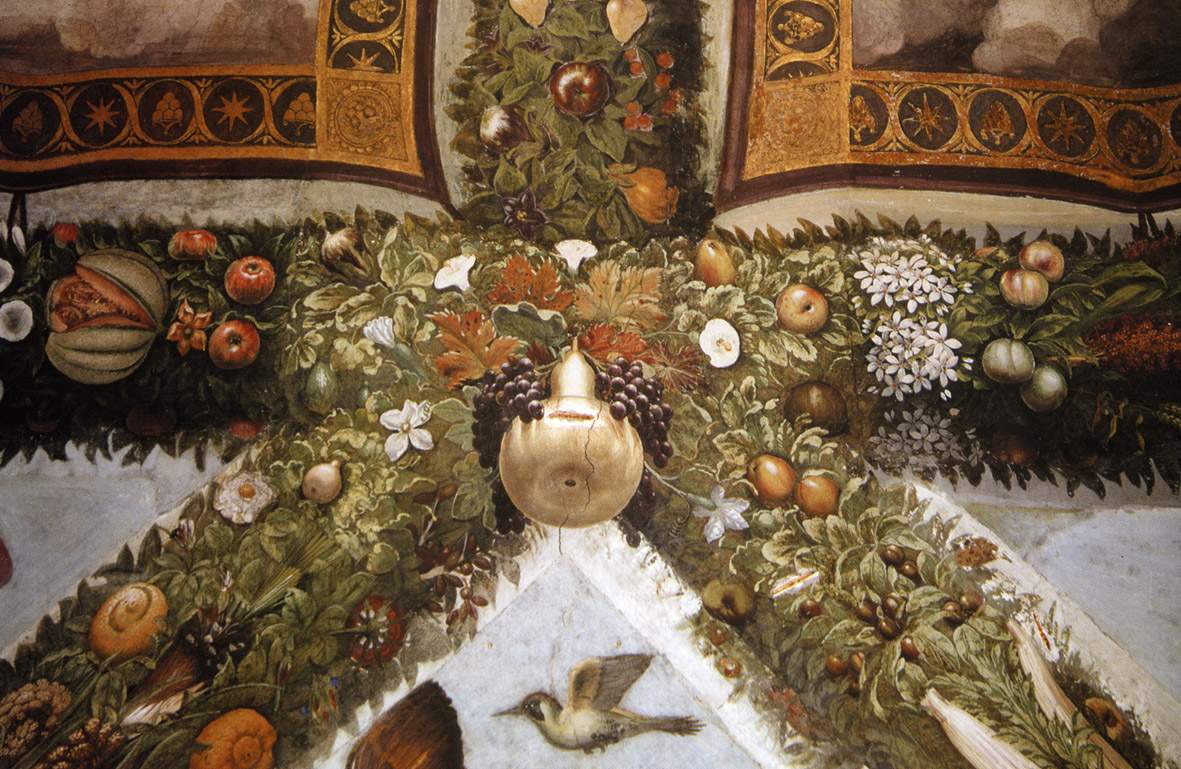Raphael wanted him by his side in the Loggia di Psyche at the Farnesina and in the undertaking of the Vatican Loggias, Michelangelo held him in high regard, Clement VII relied on him for delicate restoration and decoration work in both Rome and Florence: we are talking about Giovanni Ricamatore, or rather, Giovanni da Udine "Furlano," as he signed himself inside the Domus Aurea. The artist is the protagonist, from June 12 to September 12, 2021, of the exhibition Zuan de Udene Furlano. Giovanni da Udine between Raphael and Michelangelo (1487-1561), at Udine Castle.
The artist brought together the art of painting, drawing, architecture, stucco and restoration. All at levels of great excellence. In Rome, where he had been one of Raphael’s most trusted collaborators, he remained even after theUrbino’s death. Winning, for his skill, first the title of Knight of St. Peter ’s and then a handsome pension to be paid on theOffice of the Lead.
Around the mid-1630s, Giovanni decided to leave the city that had guaranteed him fame and honors and return to his native Udine with the intention of “not touching brushes anymore.”
Preceded by the fame he had won in Rome, once back in Friuli he found himself pressured by commissions and was unable to keep up his “self-retirement.” Among his most important achievements are the decoration of two dressing rooms in Palazzo Grimani in Venice and the execution of a long stucco and fresco frieze in the castle of Spilimbergo.
Moreover, it will be by climbing the monumental double-ramp staircase designed by Giovanni, this time as an architect, that the public will be able to access the magnificent Parliament Hall that houses the first retrospective ever dedicated to him. Giovanni da Udine between Raphael and Michelangelo (1487 - 1561), promoted by the Municipality of Udine - Integrated Museums and Libraries Service, is curated by Liliana Cargnelutti and Caterina Furlan, assisted by an authoritative Scientific Committee.
For the first time this exhibition brings together a conspicuous number of fine drawings, which, coming from various European museums and an American private collection, confirm his proverbial skill in depicting the animal-vegetal world and especially birds.
Each of the areas of Giovanni da Udine’s multifaceted activity is investigated in the exhibition through stuccoes, engravings, documents, letters, books and other materials.
In addition, spectacular sections devoted to prints and architectural drawings allow visitors to visualize the main places and environments in which the artist worked: from the Farnesina to the Vatican Loggias, from Villa Madama to the Sacrestia nuova of San Lorenzo in Florence.
The historical and cultural context of the time is reconstructed in the exhibition through books, documents and films.
A special section reproposes at the Udine Castle the documentary exhibition held in April 2017 at the Farnesina, dedicated to the festoons made in the Psyche Lodge by Giovanni da Udine.
At the end of the exhibition, visitors will be able to admire live the architectural works, frescoes, and stuccoes created by Giovanni da Udine and his collaborators in the Castle of Colloredo di Montalbano, Spilimbergo, San Daniele del Friuli, and Udine. For those wishing to venture outside Friuli, the ideal itinerary finds its completion in Venice, for a visit to Palazzo Grimani, and of course in Rome, which treasures his most celebrated works.
For all information you can visit the official website of the Civic Museums of Udine.
Pictured: Giovanni da Udine, Detail of a cross (south side). Rome Villa Farnesina, Loggia of Psyche
 |
| In Udine for the first time a monograph on Giovanni da Udine, pupil of Raphael |
Warning: the translation into English of the original Italian article was created using automatic tools. We undertake to review all articles, but we do not guarantee the total absence of inaccuracies in the translation due to the program. You can find the original by clicking on the ITA button. If you find any mistake,please contact us.